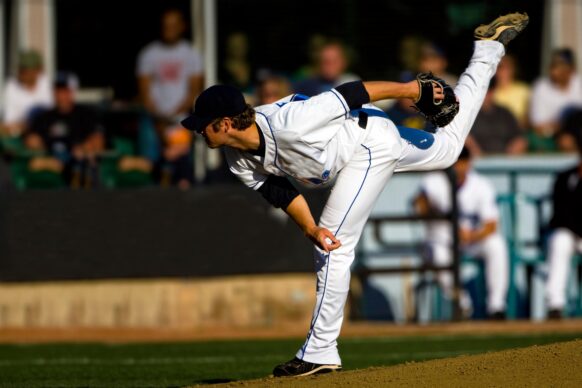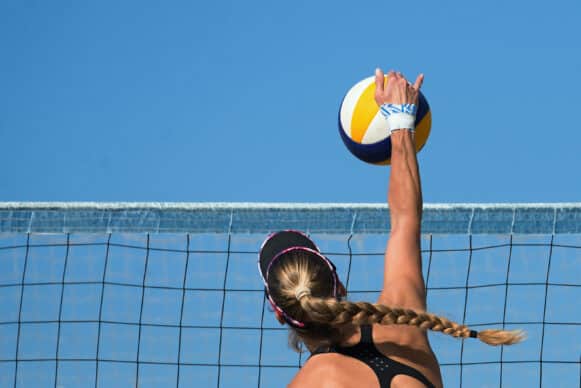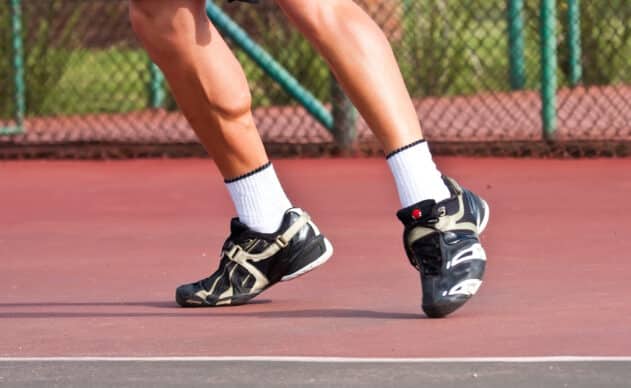By Nicolas Civale, PT, DPT
Two of the most under-analyzed muscles in the throwing motion for overhead athletes are the pectoralis major and minor, commonly referred to as the pecs. Tightness and lack of flexibility in the pectoralis muscles can have a significant and painful impact on the anterior shoulder during the throwing motion.
It’s extremely common for high school athletes to be led through weight training programs that emphasize pec strength in the form of the bench press, dumbbell press and push ups. While these exercises can be very useful in the global approach to strengthening and conditioning, they can be detrimental to a throwing athlete when over-emphasized. When the pectoralis muscles are disproportionately stronger than other musculature of the shoulder joint and back, this may cause the arm to shift anteriorly and medially in the socket of the joint. The pecs can have this effect because their tendon is attached to the proximal humerus (upper arm). This creates mobility limitations that frequently cause inefficiencies in the throwing motion as well as pain.
Possibly the most relevant issue, as it relates to a pitcher or an overhead throwing athlete, is how the pecs affect the rotator cuff musculature. The rotator cuff is a collection of four different muscles that allow the shoulder and arm to rotate around the axis of the shoulder joint. These muscles begin in the scapula (shoulder blade) and attach to the proximal aspect of the humerus, very close to where the pecs attach. The rotator cuff musculature is also much smaller and weaker than the pec muscles. If tight pec muscles start to shift the upper arm forward and medial in the socket, the humerus begins to internally rotate, stretching the external rotator musculature of the rotator cuff. These rotator cuff muscles are then asked to stretch more or less than they’re used to. Instead of acting efficiently and with proper coordination, the muscles are required to recalculate and recalibrate their usage to account for a structural change in the joint.
This need for re-calculation and re-calibration can be extremely taxing on the rotator cuff muscles, and oftentimes can lead to an overuse injury like tendonitis or a rotator cuff strain. Unfortunately, it’s common for baseball athletes to experience these types of injuries because of a lack of understanding of the proper strength training required for specific sports. Additionally, the injury often gets treated without ever truly knowing the root-cause of the issue. For example, a tight pec may cause a strain of the infraspinatus muscle, which subsequently gets treated with rest, massage, strengthening and modalities like e-stim or heat/ice. Meanwhile, tight pectoralis muscles were the true cause for the injury.
Pain is commonly the result of issues elsewhere in the kinetic chain, similar to how a misaligned axle in a car can cause issues in different parts throughout the body of a car. Unless we determine the cause of the malfunction, the malfunction is likely to persist. When we look at the body globally, and not just the muscles that are experiencing the pain, it’s easier to see how injuries are caused. This is why it’s important for a physical therapist to analyze muscle structure and flexibility in athletes from little league to the major leagues.
How to Treat Pec Tightness
The fix to this particular issue is fairly simple. Adjusting exercise routines to de-emphasize pectoralis strength and muscle bulk and encouraging flexibility is step 1. This is coupled with strengthening of the middle trapezius muscles, located between the shoulder blades on the back. This will allow the shoulder to return posteriorly in the socket of the shoulder joint, back to the center versus being pulled forward by the pecs. After this relationship is corrected, the shoulder can return to functioning normally. From there, it’s important to work with a physical therapist or a well-trained strength and conditioning coach to develop a weight lifting program that allows for proper balance in the muscles of the upper body.
What to Look For
Pec tightness in overhead athletes is sometimes difficult to spot without the right training. You may look for signs of pain and stiffness in the chest muscles as they approach the armpit/shoulder area. You may also find the athlete describing a tightness in the front or on top of their shoulder during the lay back position of the throwing motion (when the ball is cocked back away from the target). You may also see poor posture and rounded shoulders as a static positioning that can indicate tight pec muscles. Below are three exercises that can begin the process of loosening up tight pec musculature and resetting the shoulder joint to its optimal positioning.
Open Books (5 reps x 5 sec hold, each side)
Doorway Pec Stretch in 3 Positions (3 reps x 15 sec hold, each position)
Scapular Retractions (10 reps x 2 sec hold)
If you have any questions or are interested in developing a weight lifting program to address, treat and prevent pec tightness or injury, please reach out for a consultation with a physical therapist here at Evolution. Additionally, we have put together a few guides aimed at baseball players, as well as general weightlifting and overhead strengthening. You can read more about improving overhead stability here, and check out more about throwing here.




